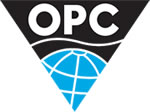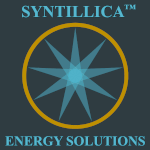
Pantheon Resources, an oil and gas company developing the Kodiak and Ahpun oil fields in close proximity to pipeline and transportation infrastructure on Alaska's North Slope, has today announced further progress from the Megrez-1 flow testing programme and guidance on the timing of future activities.
Key Highlights
Lower Prince Creek ('LPC') formation:
- A cement squeeze of the casing annulus was successfully completed to meet regulatory requirements and enable testing throughout the wellbore without limitation.
- An initial unstimulated flow test was performed on the LPC horizon to eliminate reservoir performance uncertainties that might result from introducing frac water into the reservoir, which could have impacted oil mobility.
- Although reservoir fluids (including oil and gas) were recovered during initial flow, production was water-dominated, largely consistent with the outcome in TS1.
- ·The Company will now defer hydraulic fracture stimulation of the LPC horizon until full post-well analysis can be completed and reservoir properties are better understood. The Company's guidance at this time is that no recoverable oil resource should be attributed to this LPC interval.
Forward Work Programme:
- The next test will be the Lower Sagavanirktok 3 horizon ("L. Sag. 3"). Perforation and flow testing of this shallower high porosity and permeability zone will assess oil mobility in the best remaining candidate reservoir to determine the commercial oil potential in this wellbore.
- Further testing of the Upper Prince Creek and remaining L. Sag. horizons will depend upon the results of L. Sag. 3.
- Ahpun field development planning and the regulatory application process is proceeding as scheduled, independent of Megrez-1 outcomes.
- Pantheon continues to plan for the Dubhe-1 commercial demonstration well, located in the Ahpun field western topsets, with activities targeted to commence during summer 2025.
Further Analyses of Upper Schrader Bluff - Topset 1 ('TS1'):
- Following the flow testing of TS1 as announced on 14 April 2025, further analysis has provided additional insights into reservoir properties that may explain the lack of oil mobility, despite oil saturations exceeding 50%. Analogous reservoirs in industry have required months of continuous flow before mobile oil arrived in the wellbore.
- Pantheon would be able to return to TS1 in the future once permanent production facilities are in place, which would allow for longer term flow testing to proceed at lower cost.
- This new information does not guarantee that oil will flow at commercial rates in a subsequent test of the TS1 horizon, however the high oil saturations and other data indicate a need for future testing. The Company's guidance continues to be that no recoverable oil resource should be attributed to the Upper Schrader Bluff topsets.
Analysis of Megrez-1 Flow Programme to Date
The Megrez-1 programme was planned to test multiple independent horizons. The TS1 interval was fracture stimulated in two stages and flow tested over 12 days starting 3 April 2025. Although no appreciable oil or gas was recovered at surface, post-test core and log analysis has confirmed oil saturations exceeded 50% - well above expected oil mobility thresholds. The table below summarises the results of the CoreLab analysis for two cores from TS1 and one from LPC.

Post flow test analysis indicates the reservoir is most likely oil wet. An "oil wet" reservoir is a type of petroleum reservoir where the rock surfaces are preferentially coated or attracted to oil rather than water. In other words, the rock has a higher affinity for oil, and thus oil tends to preferentially adhere to the rock grains, while water occupies the centre of the pore spaces and flows more freely.
In such systems, if there is mobile oil, it typically only appears after extended flowback periods, as per industry research and analogues. Given the daily expense associated with well test operations on the North Slope of Alaska and no imminent sign of oil mobility, the Company decided to stop the testing after 12 days to preserve capital for the remainder of the Megrez tests and the upcoming Ahpun development. Longer term testing of the TS1 horizon can be achieved far more economically in the future once permanent production facilities are in place.
A casing annulus cement squeeze was then performed to ensure well integrity and enable testing of shallower zones without limitation. The LPC interval, which has higher oil saturations than TS1 as measured by logs and cores and was seen as more likely to flow oil, was tested using a conservative, unstimulated method (swabbing and nitrogen gas lift) to maximise our understanding of test data by avoiding altering reservoir wettability or any other reservoir properties through the process of fracking and the introduction of frack fluids. Although quantities of oil and gas were recovered initially, similar to the deeper TS1 test, the flow quickly became dominated by low-salinity water. Therefore the flow test was suspended and a decision was made to defer fracture stimulation in this interval until a full post-well analysis is complete.
Together, TS1 and LPC results confirm significant in-place hydrocarbons and point to a shared oil-wet system that will likely require production-scale infrastructure and prolonged testing to evaluate commercial flow potential. It is unknown whether the oil wettability seen in TS1 and LPC horizons applies to all 1,340 vertical feet of identified net pay in the well.
The next operation will be to move up hole to test the shallower L.Sag. 3 interval, which offers materially superior porosity and permeability, and thus represents the greatest remaining chance of mobile oil. Based upon that outcome, additional targets in the Upper Prince Creek and L. Sag. may also be tested. If mobile oil is not produced, further testing on the well will be suspended. Post-well evaluation will inform optimal recovery approaches.
The results and associated analysis for Megrez-1 are independent of the Ahpun or Kodiak reservoirs which have different reservoir properties and from which mobile oil flows have been demonstrated. Ahpun West and Kodiak have combined independently certified 2C Contingent Resources of c. 1.6 billion barrels of liquids and 6.6 TCF (trillion cubic feet) of natural gas which are unaffected by the results of Megrez-1. The Ahpun field development planning and regulatory application process will proceed as scheduled, regardless of these Megrez-1 outcomes.
Pantheon remains on track to commence drilling operations on the Dubhe-1 commercial demonstration well, located in the Ahpun field topsets, in summer 2025.
Webinar
The Company intends to host an investor update via Investor Meet Company on 21 May 2025, 17:30 BST.
The presentation is open to all existing and potential shareholders. Questions can be submitted pre-event via your Investor Meet Company dashboard up until 20 May 2025, 12:00 BST, or at any time during the live presentation.
Investors can sign up to Investor Meet Company for free and add to meet PANTHEON RESOURCES PLC via:
https://www.investormeetcompany.com/pantheon-resources-plc/register-investor
Investors who already follow PANTHEON RESOURCES PLC on the Investor Meet Company platform will automatically be invited.
Max Easley, Chief Executive Officer of Pantheon Resources, commented: 'The initial flow test in the Lower Prince Creek formation has shown improved but similar reservoir characterists as TS1. Core analysis across both intervals has reinforced our view that this is a substantial, oil-charged system with unique characteristics that we're continuing to define through careful, stepwise appraisal. The data indicate material oil saturations and reservoir properties that would, under normal circumstances, support commercial production rates, but our challenge is one of engineering, to determine if/how we can engineer them to flow commercially.
'Both zones could become attractive candidates for future development once permanent facilities enable longer-term, cost-effective flowback and processing. In the near term, we're eager to test the Sagavanirktok interval, a much higher porosity and permeability reservoir.'
David Hobbs, Chairman, commented: 'The results of testing so far have been undeniably disappointing. As soon as we have completed testing operations on Megrez-1, we will be progressing permitting and planning for the Ahpun commercial demonstration well, a core milestone in advancing Phase 1 of the Alaska LNG project. This will allow a relentless focus on the transition from exploration and appraisal to development and future production of our existing independently certified resource base.'
Source: Pantheon Resource











